 W
WA Zeppelin is a type of rigid airship named after the German inventor Count Ferdinand von Zeppelin who pioneered rigid airship development at the beginning of the 20th century. Zeppelin's notions were first formulated in 1874 and developed in detail in 1893. They were patented in Germany in 1895 and in the United States in 1899. After the outstanding success of the Zeppelin design, the word zeppelin came to be commonly used to refer to all rigid airships. Zeppelins were first flown commercially in 1910 by Deutsche Luftschiffahrts-AG (DELAG), the world's first airline in revenue service. By mid-1914, DELAG had carried over 10,000 fare-paying passengers on over 1,500 flights. During World War I, the German military made extensive use of Zeppelins as bombers and as scouts, killing over 500 people in bombing raids in Britain.
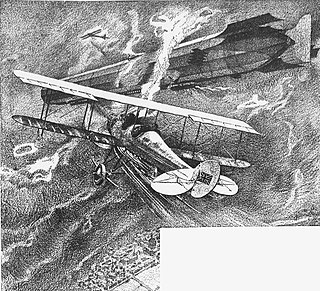 W
WThe Imperial German Army Zeppelin LZ 39 was an O-class World War I zeppelin.
 W
WThe Imperial German Navy Zeppelin LZ 47 was a P-class World War I zeppelin. Destroyed by enemy fire on 21 February 1916 in the Battle of Verdun, killing the crew of 15.
 W
WThe Imperial German Navy Zeppelin LZ 48 was a P-class World War I zeppelin.
 W
WThe Imperial German Navy Zeppelin LZ 53 was a P-class World War I zeppelin.
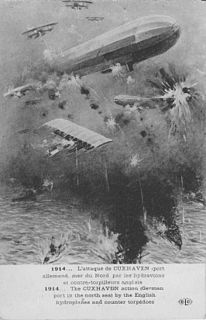 W
WThe Imperial German Navy Zeppelin LZ 31 was a M-class World War I zeppelin.
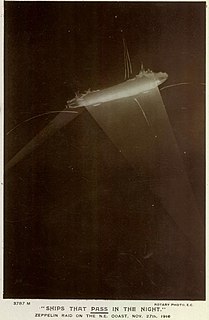 W
WThe Imperial German Army Zeppelin LZ 78 (L-34) was a R-class World War I zeppelin.
 W
WZeppelin LZ 89 was an R-class zeppelin of the Imperial German Navy. After a short career during the World War I it ran out of fuel during a mission and was deliberately crashed.
 W
WZeppelin LZ 95 was a U-class zeppelin of the Imperial German Military.
 W
WThe Imperial German Navy Zeppelin LZ 64, given the tactical number L 22, was a Q-class / L20-class World War I zeppelin of the Imperial German Navy.
 W
WThe Imperial German Navy Zeppelin LZ 112, given the tactical number L 70, was an x-class / L70-class World War I zeppelin of the Imperial German Navy.
 W
WThe 1930 Graf Zeppelin stamps were a set of three airmail postage stamps, each depicting the image of the Graf Zeppelin airship, exclusively issued by the United States Post Office Department, USPOD, in 1930 for delivery of mail carried aboard that airship. Although the stamps were valid for postage shipped via the Zeppelin Pan American flight from Germany to the United States, via Brazil, the set was marketed to collectors and was largely intended to promote the route. 93.5% of the revenue generated by the sale of these stamps went to the Zeppelin Airship Works in Germany. The stamps were also issued as a gesture of good will toward Germany. The three stamps were used briefly and then withdrawn from sale where the remainder of the stock was destroyed by the Post Office. Due to the great depression and the high cost of the stamps most collectors and the general public could not afford to purchase or use them. Consequently, only about 227,000 of the stamps were sold, just 7% of the total made, making them relatively scarce and highly prized by collectors.
 W
WThe Dixmude was a Zeppelin airship built for the Imperial German Navy as L 72 and unfinished at the end of the First World War, when it was given to France as war reparation and recommissioned in French Navy service and renamed Dixmude. It was lost when it exploded in mid-air on 21 December 1923 off the coast of Sicily, killing all 52 on board. This was one of the first of the great airship disasters, preceded by the crash of the British R38 in 1921 and the US airship Roma in 1922, and followed by the destruction of the British R101 in 1930, the USS Akron in 1933 and the German Hindenburg in 1937.
 W
WThe two Hindenburg-class airships were hydrogen-filled, passenger-carrying rigid airships built in Germany in the 1930s and named in honor of Paul von Hindenburg. They were the last such aircraft ever built, and in terms of their length and volume, the largest Zeppelins ever to fly. During the 1930s, airships like the Hindenburg class were widely considered the future of air travel, and the lead ship of the class, LZ 129 Hindenburg, established a regular transatlantic service. The destruction of this ship in a highly publicized accident was to prove the death knell for these expectations. The second ship, LZ 130 Graf Zeppelin, was never operated on a regular passenger service, and was scrapped in 1940 by order of Hermann Göring.
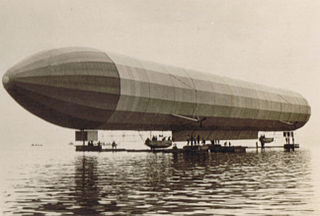 W
WThe LZ 2 was a German experimental airship constructed by Luftschiffbau Zeppelin and first flown in 1906. It was the true ancestor of later Zeppelin airship designs. The major mistake made by Kübler in the design of the LZ 1 were not repeated: the designer, Ludwig Dürr, who was to head the design of all subsequent Zeppelins, used triangular-section girders instead of Kübler's flat girders, and elevators instead of the lead weight to control pitch. Though the life of the LZ 2 was brief, consisting of only two flights, its near sister ship, the LZ 3, which first flew on 9 October 1906 and was purchased by the German Army and operated as the Z I until 1913. Before being purchased by the Army, LZ 3 made many flights and carried a number of influential passengers, including the German Crown Prince.
 W
WThe Zeppelin LZ 3 was a German experimental airship constructed in Friedrichshafen under the direction of Ferdinand von Zeppelin. It was first flown on 9 October 1906 and was later purchased by the German Army and operated as Z I until being retired in 1913. Before being purchased by the Army, LZ 3 made many flights and carried a number of influential passengers, including the German Crown Prince.
 W
WThe Zeppelin LZ 4 was a German experimental airship constructed under the direction of Ferdinand von Zeppelin. First flown on 20 June 1908, it made a series of successful flights including a 12-hour flight over Switzerland. It was destroyed when it caught fire after landing to carry out engine repairs during a projected 24-hour endurance trial. This disaster proved fortunate for Zeppelin: donations by the German public raised 6.5 million marks, so guaranteeing the future of his development of airships.
 W
WLZ 10 Schwaben was a German rigid airship built by Luftschiffbau Zeppelin in 1911 and operated by DELAG for passenger service. It is regarded as the first commercially successful passenger-carrying aircraft.
 W
WThe Zeppelin LZ 13 Hansa was a German civilian rigid airship first flown in 1912. It was built for DELAG to carry passengers and post and flew the first international passenger flight, visiting Denmark and Sweden in September 1912. In 1913 it was hired to the Imperial German Navy as a training craft, and at the outbreak of World War I it was requisitioned by the German military who used it for bombing, reconnaissance, and finally as a training airship.
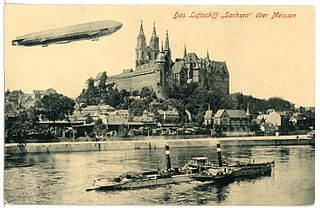 W
WLZ 17 Sachsen was the fourth Type H improved Schwaben-class Zeppelin that first flew on 3 May 1913 and operated as a passenger airship with DELAG until WWI, when it was commandeered for service with the Imperial German Army. After being transferred to the Imperial German Navy, LZ17 was dismantled in 1916.
 W
WLZ 18 was the second Zeppelin airship to be bought by the Imperial German Navy. It caught fire and crashed with the loss of all aboard on 17 October 1913 before entering service.
 W
WM2-class zeppelin LZ 32, given tactical number L 7, was a rigid airship operated by the Kaiserliche Marine, which flew 164 times, including 77 reconnaissance missions over the North Sea, with several unsuccessful attempts to attack English coastal towns. Brought down on 4 May 1916 by anti-aircraft fire from HMS Phaeton and HMS Galatea, she was destroyed by Royal Navy submarine HMS E31 off Horns Reef.
 W
WThe airship LZ 37 was a World War I Zeppelin of the German Kaiserliche Marine. It was the first Zeppelin to be brought down during the war by an enemy plane on the night of 6 to 7 June 1915.
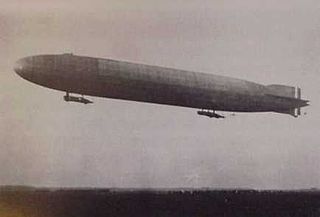 W
WZeppelin LZ 54, given the military tactical designation L 19, was a Zeppelin of the Imperial German Navy. While returning from her first bombing raid on the United Kingdom in early 1916, she came down in the North Sea. Her crew survived the crash, but drowned after the crew of a British fishing vessel refused to rescue them; at the time this was a widely reported and notorious incident.
 W
WThe LZ 61 was a World War I German Navy airship, allocated the tactical numbering 'L 21'. It carried out a total of ten raids on England, and 17 reconnaissance missions.
 W
WThe Imperial German Army Zeppelin LZ 86 (L-39) was a R-class World War I zeppelin.
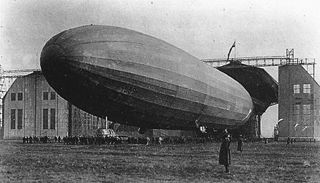 W
WZeppelin LZ 104 and nicknamed Das Afrika-Schiff, was a World War I German dirigible, famous for attempting a long-distance resupply mission to the beleaguered garrison of Germany's East Africa colony.
 W
WLZ 120 Bodensee was a passenger-carrying airship built by Zeppelin Luftschiffbau in 1919 to operate a passenger service between Berlin and Friedrichshafen. It was later handed over to the Italian Navy as war reparations in place of airships that had been sabotaged by their crews and renamed Esperia. A sister-ship, LZ 121 Nordstern, was built in 1920: it was handed over to France and renamed Méditerranée.
 W
WLZ 127 Graf Zeppelin was a German passenger-carrying, hydrogen-filled rigid airship that flew from 1928 to 1937. It offered the first commercial transatlantic passenger flight service. Named after the German airship pioneer Ferdinand von Zeppelin, a count (Graf) in the German nobility, it was conceived and operated by Dr Hugo Eckener, the chairman of Luftschiffbau Zeppelin.
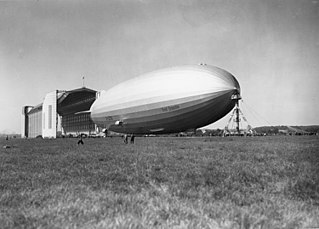 W
WThe Graf Zeppelin was the last of the German rigid airships built by Zeppelin Luftschiffbau during the period between the World Wars, the second and final ship of the Hindenburg class, and the second zeppelin to carry the name "Graf Zeppelin" and thus often referred to as Graf Zeppelin II. Due to the United States refusal to export helium to Germany, the Graf Zeppelin II was filled with hydrogen and therefore never carried commercial passengers. It made 30 flights over 11 months in 1938–39, many being propaganda publicity flights; but staff of the Reich Air Ministry were aboard to conduct radio surveillance and measurements. The airship, along with its LZ 127 namesake were both scrapped in April 1940, and their duralumin framework salvaged to build aircraft for the Luftwaffe.
 W
WUSS Los Angeles was a rigid airship, designated ZR-3, which was built in 1923–1924 by the Zeppelin company in Friedrichshafen, Germany, as war reparation. It was delivered to the United States Navy in October 1924 and after being used mainly for experimental work, particularly in the development of the American parasite fighter program, was decommissioned in 1932.
 W
WZeppelin "L 30" was the first R-class "Super Zeppelin" of the German Empire. It was the most successful airship of the First World War with 31 reconnaissance flights and 10 bombing runs carrying a total of 23,305 kg of bombs, with the first ones targeting England, and the four final raids targeting Livonia and Ösel (Saaremaa). At the time of its construction, It was the world's largest Zeppelin, and with its 6 engines, "L 30" could reach speeds higher than 100 km/h, making it the fastest Zeppelin in the world too.
 W
WThe Zeppelin LZ 1 was the first truly successful experimental rigid airship. It was first flown from a floating hangar on Lake Constance, near Friedrichshafen in southern Germany on 2 July 1900. "LZ" stood for Luftschiff Zeppelin, or "Airship Zeppelin"
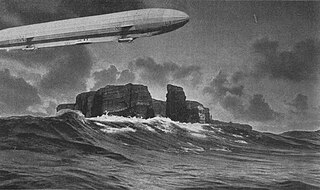 W
WZeppelin LZ 14, given the navy tactical number L 1, was a rigid airship built for the Kaiserliche Marine to carry out reconnaissance over the North Sea and enemy territory. It was first flown on 7 October 1912. On 9 September 1913, LZ 14 was on a patrol over the North Sea when it encountered a thunderstorm, which resulted in a forced landing/crash. 14 crew-members drowned, becoming the world's first ever Zeppelin casualties.
 W
WThe Zeppelin LZ 23 was the 2nd improved L-class Zeppelin, and the eleventh airship of the Imperial German Army, first flown on 21 February 1914 and shot-down by anti-aircraft fire on 23 August 1914.
 W
WZeppelin LZ 38 was Zeppelin P Class airship of the German Imperial Navy. It was the first to bomb London, United Kingdom.
 W
WZeppelin LZ 55 was a P class Zeppeling of the Imperial German Army in World War I. It was shot down by the old British pre-dreadnough battleship HMS Agamemnon in 1916 during Salonika campaign
 W
WZeppelin LZ 66, Imperial German Navy serial L 23, took part in 51 reconnaissance missions during World War I and on 21 August 1917 it was shot down by Second Lt Bernard A. Smart, flying a Sopwith Pup.
 W
WLZ 72 was an R Class super-zeppelin belonging to the Imperial German Navy. It was commanded by Kapitänleutnant Heinrich Mathy, an experienced commander, and took part in several raids over London during World War I. It also participated in a reconnaissance role during the Sunderland raid of 19 August 1916. Its last flight was launched late at night on 1 October 1916. Several miles north of London, it was caught in searchlights and anti-aircraft fire. During this engagement, 2nd Lt. Wulstan J. Tempest was on patrol and spotted the zeppelin. He proceeded to engage the airship with incendiary rounds, causing the ship to burst into flames and crash in a field near Potter's Bar. After this disastrous crash, the Imperial German Navy began decreasing its amount of zeppelin raids. The entire crew died, and were originally buried there but were transported to Cannock Chase in the 1960s.
 W
WLZ 74 was an R Class super-zeppelin belonging to the Imperial German Navy.
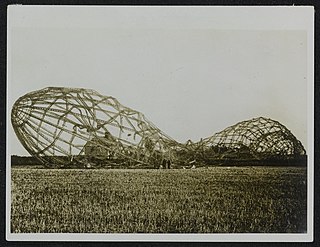 W
WThe Imperial German Army Zeppelin LZ 76 (L-33) was a R-class World War I zeppelin.
 W
WZeppelin LZ 102 was a airship of the German Imperial Navy. It was planned that it would attempt a mission to Africa but it was destroyed and its sister ship LZ 104, nicknamed Das Afrika-Schiff, made a famous attempt at a long-distance resupply mission to the beleaguered garrison of Germany's East Africa colony.
 W
WThe LZ 85, tactical number L 45, also known as Zeppelin of Laragne by the French public, was a World War I R-Class zeppelin of the German Navy that carried out a total of 27 flights, including 3 raids on England and 12 reconnaissance missions.
 W
WThe Zeppelin Museum Friedrichshafen is a museum in Friedrichshafen on Lake Constance (Bodensee) in Germany, the birthplace of the Zeppelin airship. The museum houses the world's largest aviation collection and chronicles the history of the Zeppelin airships. In addition, it is the only museum in Germany that combines technology and art. The museum has been in its current location at the Hafenbahnhof since it was reopened in 1996. The exhibition was designed by HG Merz.
 W
WThe Zeppelin NT is a class of helium-filled airships being manufactured since the 1990s by the German company Zeppelin Luftschifftechnik GmbH (ZLT) in Friedrichshafen. The initial model is the NT07. The company considers itself the successor of the companies founded by Ferdinand von Zeppelin which constructed and operated the very successful Zeppelin airships in the first third of the 20th century. There are, however, a number of notable differences between the Zeppelin NT and original Zeppelins as well as between the Zeppelin NT and usual non-rigid airships known as blimps. The Zeppelin NT is classified as a semi-rigid airship.
 W
WThe Zeppelin P Class was the first Zeppelin airship type to be produced in quantity after the outbreak of the First World War. 22 of the type were built as well as 12 of a lengthened version, the Q Class . They were used for many of the airship bombing raids on the United Kingdom in 1915-16, for naval patrol work over the North Sea and Baltic and were also deployed on the eastern and south-eastern fronts.
 W
WThe Zeppelin R Class was a type of rigid airship developed by Zeppelin Luftschiffbau in 1916 for use by the Imperial German Navy and the German Army for bombing and naval patrol work. Introduced in July 1916 at a time when British air defences were becoming increasingly capable, several were lost in the first months of operation, leading the Germans to reconsider their technical requirements and eventually to develop airships capable of bombing from a greater height. Most surviving examples were modified to meet these requirements, by reducing weight at the expense of performance. A total of 17 were built.